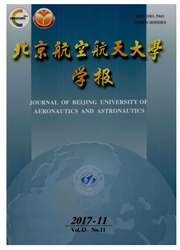

 中文摘要:
中文摘要:
为了提高铝试件脉冲红外热像无损检测的缺陷探测能力,研究了主分量分析法在热像信号处理中的运用方法及效果.结合脉冲热像序列处理论述了主分量分析的数据准备、计算方法和处理效果.为了考查算法的有效性,对铝合金板进行了脉冲红外热像无损检测实验.结果表明,采用第2、第3主分量图像以及由前几个主分量重建的图像均有增强缺陷对比度和抑制加热不均的效应,从而提高了脉冲红外热无损检测的缺陷检测能力;此外,在检测铝板模拟腐蚀时,能使可探测的最小腐蚀率减小10%左右.
 英文摘要:
英文摘要:
To improve the defect detecting ability of pulsed infrared thermographic nondestructive testing(NDT) of aluminum specimens,the principal component analysis(PCA) method and its application in thermographic signal processing were studied.Some aspects of PCA,such as data preparation,algorithm and processing effects were discussed,based on the pulsed thermographic sequence processing.Experimental studies were carried out to evaluate the validity of the algorithm and detect the defects in an aluminum alloy plate.The results show that the second and third PCA images and a reconstructed image from the first few principal components have the ability to increase the defect contrast and reduce the effects of non-uniform heating,and the detection capability of pulsed thermographic NDT is enhanced.Besides,the minimum detectable corrosion rate decreases by approximately 10 percent by using PCA in detecting the imitative corrosion in the aluminum alloy plate.
 同期刊论文项目
同期刊论文项目
 同项目期刊论文
同项目期刊论文
 期刊信息
期刊信息
